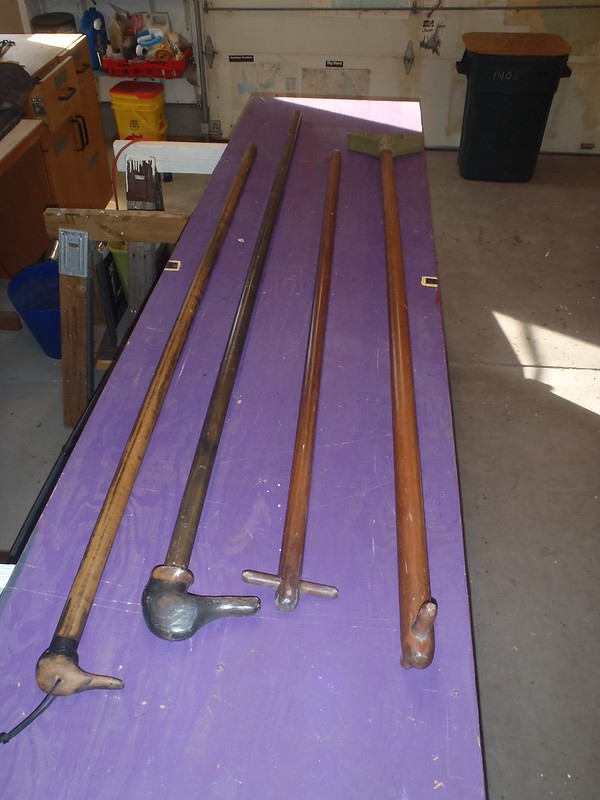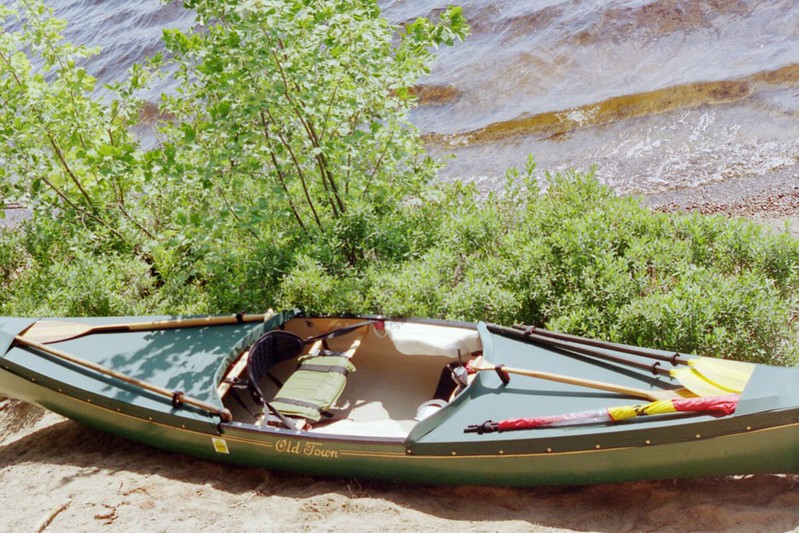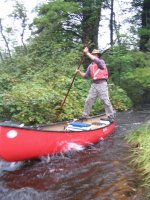Some poling photos from a 10 year old SD card I recently found.
I don’t stand and pole, but an odd lot of canoeing companions do. Accent on the “odd”; sometimes more than just the standing part.
Gunwale stands; I’m still unsure how they get both feet up there at once, it is like some gravity-defying skateboarder trick.
 IMG021
IMG021 by
Mike McCrea, on Flickr
Or sillier stuff, of even less practical use. I doubt this is demonstrated at a poling symposium.
 EK_0021
EK_0021 by
Mike McCrea, on Flickr
I became familiar with the term “Aggressive step-out”, and am told that if your head isn’t wet it is still considered a “step out”. Such step outs are easily blamed on Mobey the dog, who I will note is still inside the canoe, and dry. Mobey was a barking PITA at times, but he loved to play fetch in rapids, and learned to work upstream ferry angles, ruddering with his tail. Mobey may have read water better than his human.
 IMG004
IMG004 by
Mike McCrea, on Flickr
There is a back story to that Tom “step out”. Tom was poling sweep on a group trip. Just downstream of some bouncy water the group took a shore break. Standing beside our canoes on the bank Tom poled into view and got his camera out to take a photo of us, leaning his Explorer on edge to turn it and better frame the shot.
Someone said “Wow, he’s really good”. Seconds later Tom was wet from the waist down, so technically just an aggressive step out.
Tom’s new, expensive, not-waterproof camera did not survive. The SD card did, and the three photos Tom took told the tale. The first featured a horizontal horizon, the second a slanted horizon and the third a blurry, near vertical horizon. Video would have been so much better.
Some dogs, and some polers, are better balanced than others. Mollie and Ruthie for example; those two had more canoe time than most paddlers.
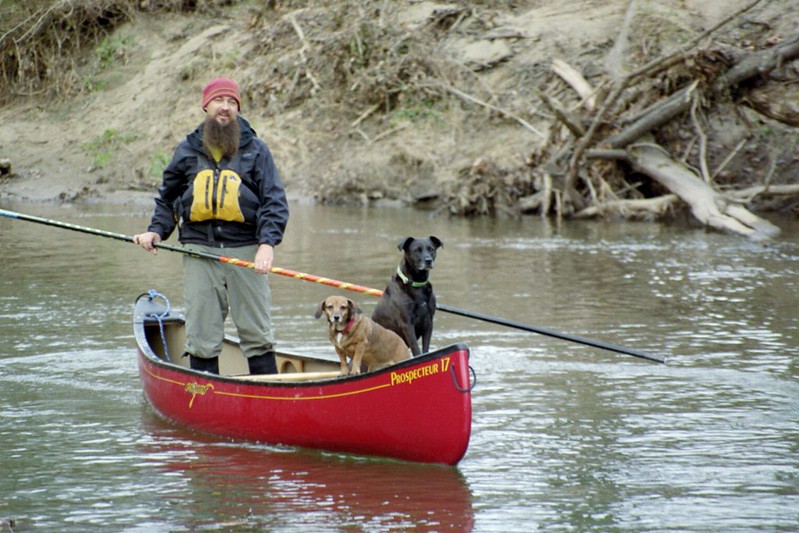 IMG018
IMG018 by
Mike McCrea, on Flickr
Poling on frigid snowy days to me seems fraught with chilly peril, but then I rarely stand up in current, even in the best of weather. Low water winter saw a lot of small stream poling trips.
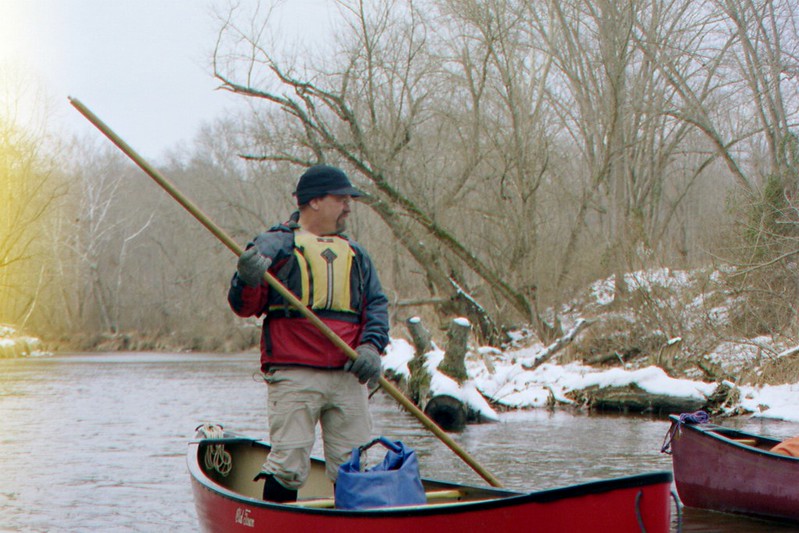 FH000006
FH000006 by
Mike McCrea, on Flickr
On group river trips poling companions were usually snubbing downstream in paddler accompaniment, where standing tall gives them a better view of the rocks and shallows ahead.
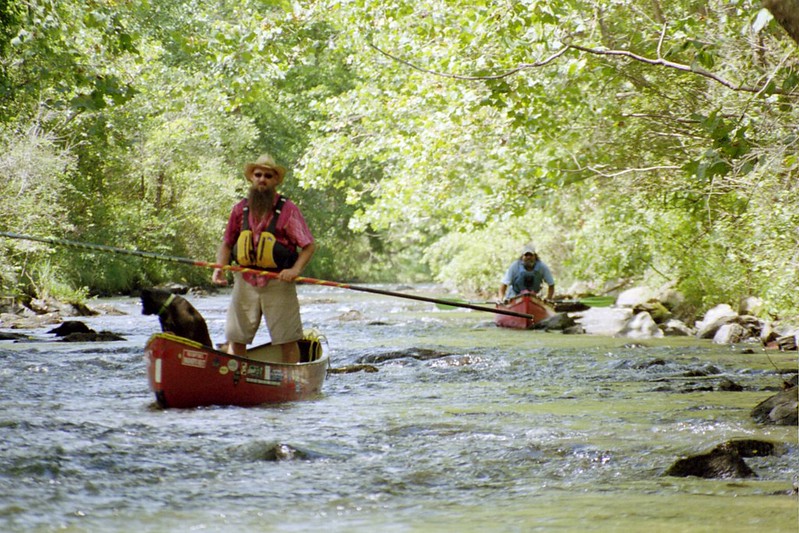 IMG000
IMG000 by
Mike McCrea, on Flickr
Closet rod pole, one of ours I believe, with a black band painted on at the center balance point.
 IMG001
IMG001 by
Mike McCrea, on Flickr
I may not be standing tall, but poles are fun and easy to make. My sons occasionally pole, and our Texas Towers button clip take-apart aluminum pole has an attachable paddle blade and tee grip to serve as a stand up paddle.
 DSCF1997
DSCF1997 by
Mike McCrea, on Flickr
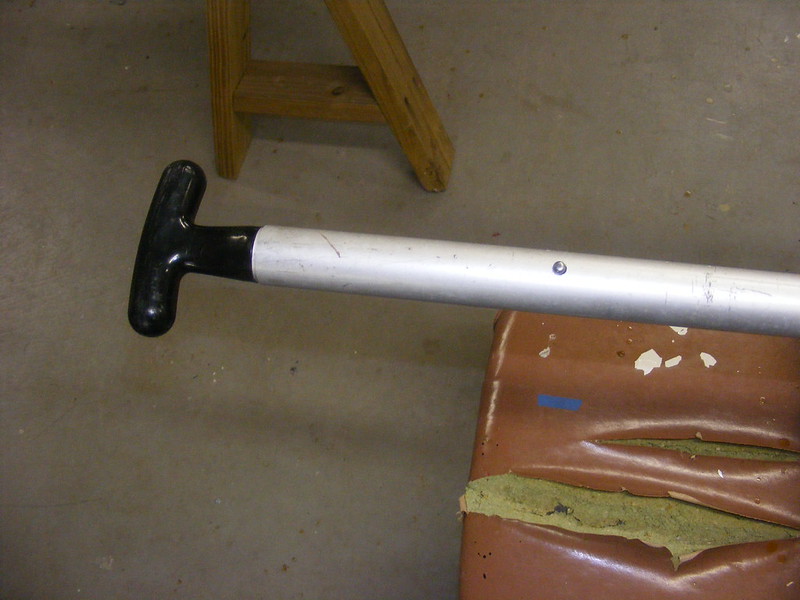 DSCF1972
DSCF1972 by
Mike McCrea, on Flickr
Unlike wood poles aluminum will sink, so I stuffed the aluminum tubes with split foam pipe insulation.
 DSCF1995
DSCF1995 by
Mike McCrea, on Flickr
The soloized Penobscot makes a decent poling canoe.
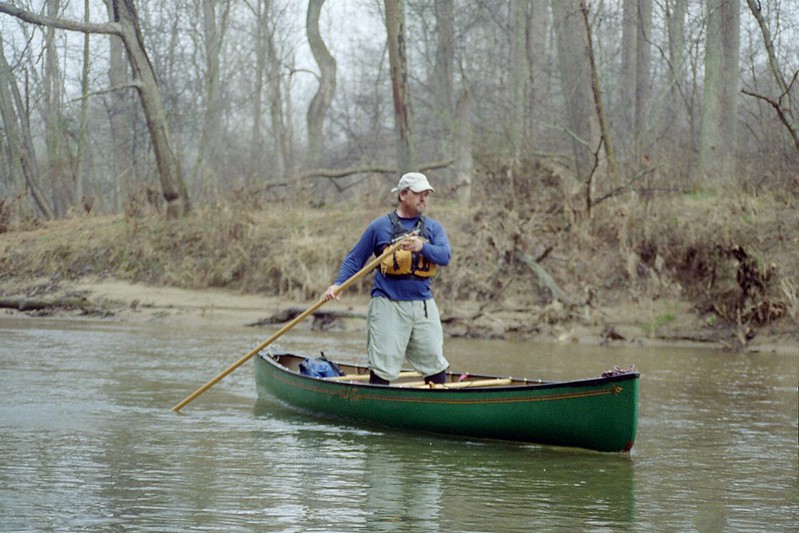 IMG004
IMG004 by
Mike McCrea, on Flickr
The shallow vee bottom of the soloized Explorer may be better suited to poling.
 IMG005
IMG005 by
Mike McCrea, on Flickr
Even on downstream trips poler companions will pause at small rapids for some upstream play.
 IMG015
IMG015 by
Mike McCrea, on Flickr
Fun to sit and watch, especially the occasional “Oh crap” moments. Tom again, experiencing an abrupt, unintended, radical left turn near the top of that rapid.
 IMG018
IMG018 by
Mike McCrea, on Flickr
Some poler friends seemingly refuse to take a seat, even when it is the wisest course of action. “Tom” and “wise” are rarely used in the same sentence.
 IMG021
IMG021 by
Mike McCrea, on Flickr
I am a dedicated sitter, but it is fun to look downstream and see a poling contingent standing tall ahead.
 IMG022
IMG022 by
Mike McCrea, on Flickr
 IMG003
IMG003 by
Mike McCrea, on Flickr
My favorite after-the-fall poling photo is poler extraordinaire Doug, taken mere minutes after he proudly intoned for all to hear “I haven't swum in fifteen years”.
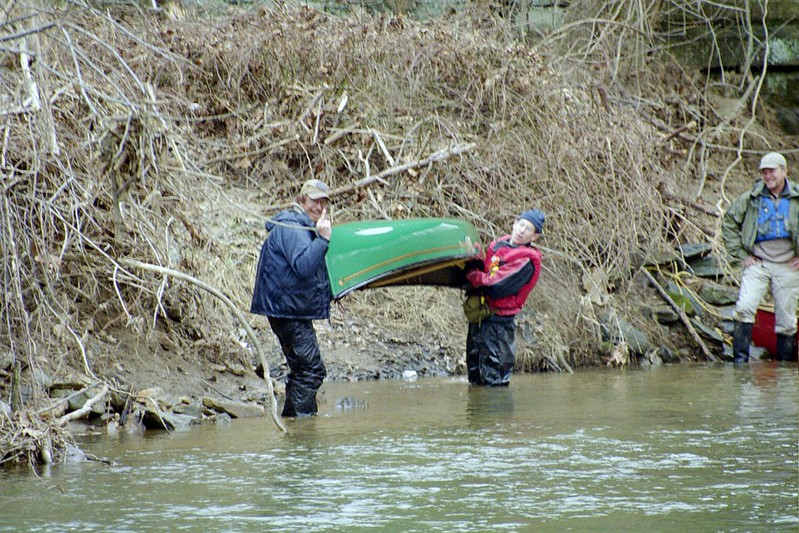 IMG022
IMG022 by
Mike McCrea, on Flickr
I believe he is indicating “I’m number one”. Still smiling though

